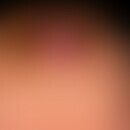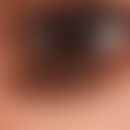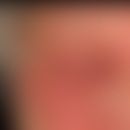Synonym(s)
DefinitionThis section has been translated automatically.
The term "lotion" or lotion is misleading as it is used in cosmetic linguistic usage for a liquid emulsion (e.g. body lotion), i.e. for an O/W emulsion "ointment" (better cream) with a very high water content (see below Ungt. emulsificans aquosum). Both anionic and non-ionic emulsifiers or complex emulsifiers may be included. Just as with hydrophilic creams, preservation is required.
The term lotio (e.g. Lotio alba aquosa) is documented in the medical-pharmaceutical nomenclature in the actual sense for a shaking mixture. However, it is recommended to use the unique term shaking mixture for liquid suspensions.
Pharmacodynamics (Effect)This section has been translated automatically.
Cooling effect. The liquid consistency makes lotions easier to apply than creams to certain areas of the skin, such as hairy or intertriginous areas or hard-to-reach areas.
You might also be interested in
IncompatibilityThis section has been translated automatically.
- Benzalkonium chloride, benzyl alcohol, cetylpyridinium chloride, chlorocresol, hexachlorophene, β naphthol, nipagine 0.2%, oleum thyme, oxytetracycline-HCl, phenol. liquefact., Pix betulina, Pix juniperi., Pix lithanthracis, polidocanol, resorcinol, salicylic acid, tannin.
- Tetracaine HCl and tyrothricin lead to inhomogeneities.
- Chloramine T causes a change in smell.
- Dithranol, pyrogallol, silver nitrate and tetracycline-HCl cause colour changes.
PreparationsThis section has been translated automatically.
Ash Base Lotio, Excipial U Hydrolotio, Lipoderm Lotion, La Roche-Posay Hydranorme W/O Emulsion.
The NRF lists a standardised formulation with the"hydrophilic base emulsion (NRFS.25.)".
Note(s)This section has been translated automatically.
Incompatibility with salicylic acid in lotions containing polyacrylic gel (e.g. Ash Base Lotio): The use of polyacrylate gels in lotions is a popular trick to achieve an optimal smooth consistency of a lotion without increasing the fat component.
The polyacrylate gel has its optimum stability at pH 6-8. Salicylic acid, as the stronger acid (pH 2.4), will release the weaker polyacrylic acid from the polyacrylate. This causes the gel structure to collapse spontaneously, recognisable by a spontaneous liquefaction of the lotion up to the consistency of a drinking milk.
LiteratureThis section has been translated automatically.
- Wolf G (2012) Inhomogeneities in individual formulations. dermatologist 63: 518-519
TablesThis section has been translated automatically.
Compatibility of drugs in hydrophilic lotions
Acridine flavinium chloride 2% |
Dexpanthenol 5% |
Sodium chloride 10 |
allantoin 0,5% |
Dimetine maleate 1% |
neomycin sulfate 0,5%. |
aluminium chloride 10% |
Dimeticone 10% |
Nicotinic acid benzyl ester 3%. |
Ammonium bituminosulphonate 10 |
Diphenhydramine HCl 2% |
nitrofurazone 0,2% |
Amphotericin B 3% |
Erythromycin 2% |
Nystatin 100 000 IU/g |
anthrarobin 2% |
Ethacridine lactate 1% |
Oleum Pini 1,5 |
azulene 0,2% |
Eucalyptol 10% |
Pheniramine hydrogen maleate 1,25% |
bacitracin 500 IU/g |
Gentamicin sulphate 0,2 |
Polyvidon iodine 10% |
Bamipine HCl 2% |
Urea 10% Urea |
Prednisolone 0,5% Prednisolone |
Benzocaine 10% |
Hydrarg. sulf. rubr. 1% |
Procaine HCl 2% |
Benzoyl peroxide 5% |
hydrocortisone 1% |
Sulphur 5% |
betamethasone-17-valerate 0,1% |
hydroxyquinoline sulfate 0,5%. |
Sorbic acid 0,1% of |
Bufexamac 5% |
potassium iodide 3,5%. |
Sulphadiazine 5% |
calcium chloride 5% |
Camphor 5% |
sulfisomidine 5% |
Chloramphenicol 1% |
Cod liver oil 10% |
terpiniol 1,5 |
Chlorophenoxamine-HCl 1,5% Chlorophenoxamine-HCl 1,5% Chlorophenoxamine |
Liq. alum. acet. 20% |
Tinctura Myrrh 3% |
Chlortetracycline HCl 3% |
Liq. carb. deterg. 10% |
tretinoin 0.1% |
Chrysarobin 5% |
Menthol 5% |
triamcinolone acetonide 0,1 |
Clioquinol 5% |
Merbromine 2% |
Undecylenic acid 5% |
clotrimazole 1% |
Methyl salicylate 5% |
Zinc oxide 10 |
dexamethasone 0,1% |
Lactic acid 5 |
Zinc undecylenate 5% |




